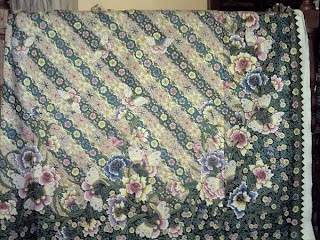So far we only know that batik comes from Java. Batik is used for official or non official events. Besides batik from Java land, you will find well-batik batik from other areas, such as: Batik Jambi, Bengkulu batik, batik Sasirangan, etc.. No one believes in minang aspect there is also a batik, batik known as clay (clay).
as shown in the image of women who Whereas, guests are welcome ..
Batik is very typical of clay, according to the themes taken from nature outstretched. Called clay, because the basic color is brown batik like the color of the soil. As for painting on fabric batik motif that, among other leafy vines or roots, curved leaf fern, bamboo shoots, etc.. A clear picture that appears as a motif batik clay is non-figurative painting, not motivated by the symbols or symbols. What distinguishes the clay batik with batik batik-produced in Java?. In Java we know the name of batik; sidomukti, broken sword, trumtum, and other names.
When I drill down further on this clay batik, batik was the use of this clay has lasted decades ago.
Currently in the city of Padang, there is a businesswoman who produce batik batik-clay. But unfortunately, he has determined to limit the production of batik that is not balanced by the turnover of which he received. According to the mothers of Java and Sumatra outside the cities are coming to stores are located in Padang Sawahan. Brand turns out that clay batik hunting and brought back to their home areas. The price? over 500 thousand dollars.
as shown in the image of women who Whereas, guests are welcome ..
Batik is very typical of clay, according to the themes taken from nature outstretched. Called clay, because the basic color is brown batik like the color of the soil. As for painting on fabric batik motif that, among other leafy vines or roots, curved leaf fern, bamboo shoots, etc.. A clear picture that appears as a motif batik clay is non-figurative painting, not motivated by the symbols or symbols. What distinguishes the clay batik with batik batik-produced in Java?. In Java we know the name of batik; sidomukti, broken sword, trumtum, and other names.
When I drill down further on this clay batik, batik was the use of this clay has lasted decades ago.
Currently in the city of Padang, there is a businesswoman who produce batik batik-clay. But unfortunately, he has determined to limit the production of batik that is not balanced by the turnover of which he received. According to the mothers of Java and Sumatra outside the cities are coming to stores are located in Padang Sawahan. Brand turns out that clay batik hunting and brought back to their home areas. The price? over 500 thousand dollars.








